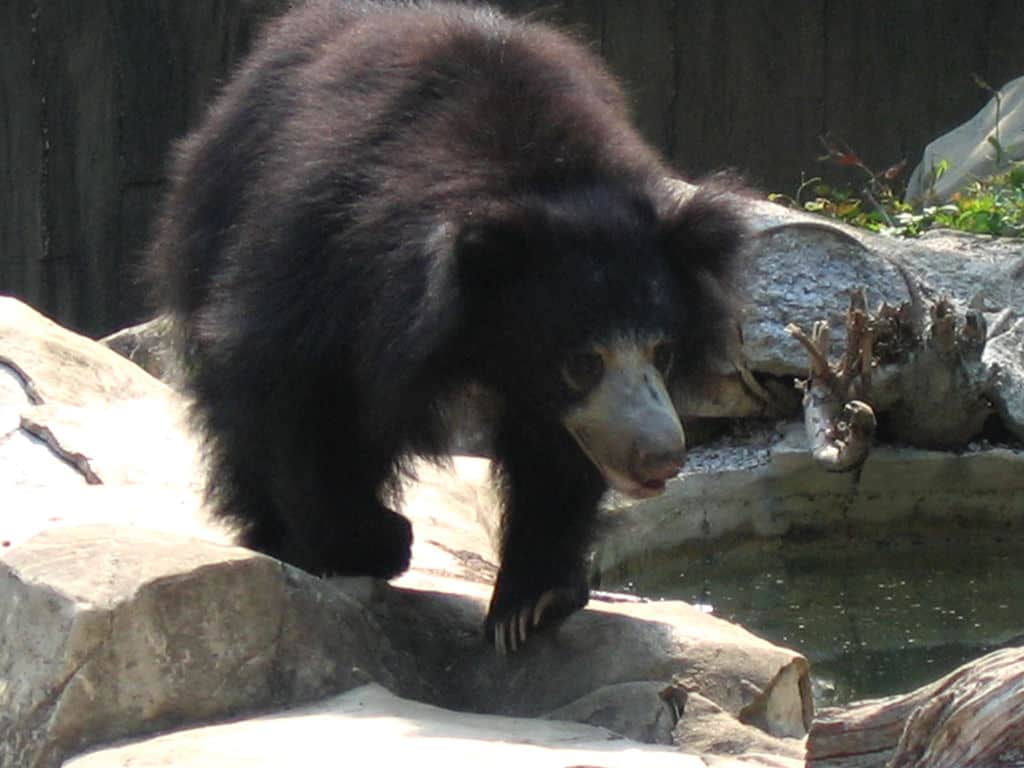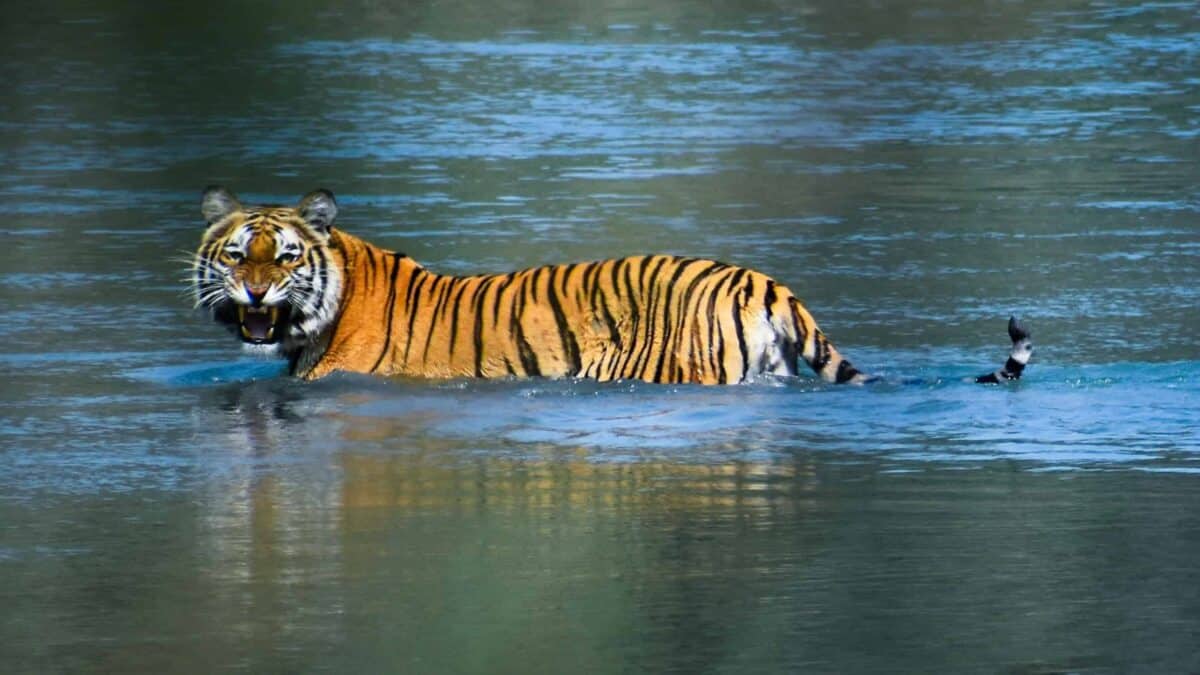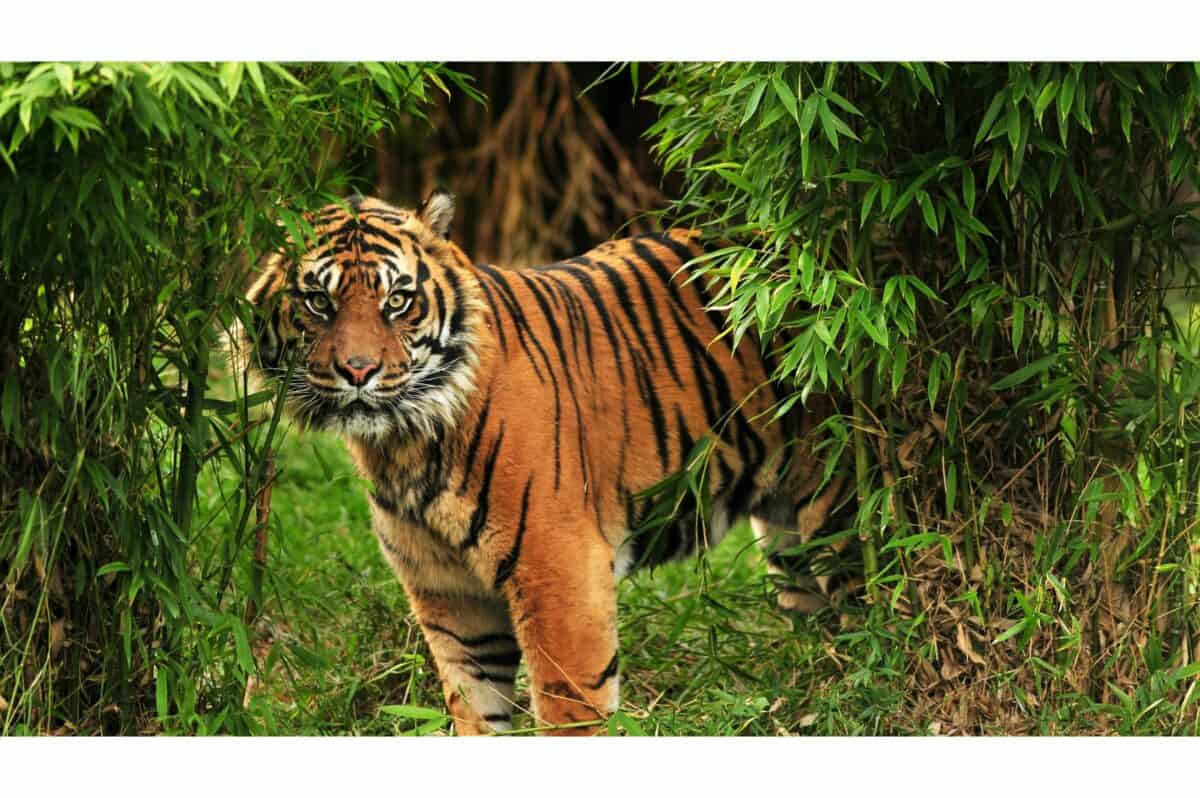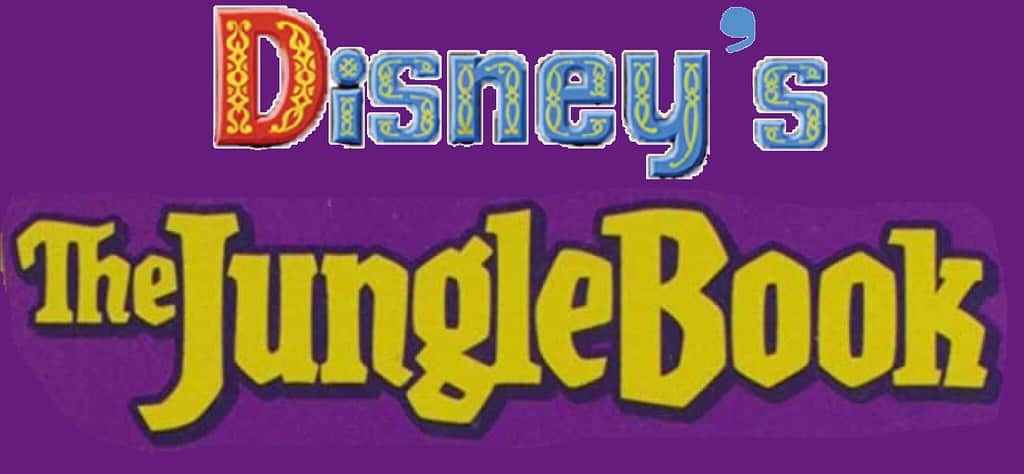Disney’s “The Jungle Book” has enchanted audiences for generations with its tale of a man-cub raised by wolves in the jungles of India. From Mowgli’s adventures with Baloo the bear to his confrontations with Shere Khan the tiger, the story presents a fascinating portrayal of jungle life. But how much of Disney’s interpretation—both in the 1967 animated classic and the 2016 live-action remake—reflects reality? This article explores the true nature of the animals and environments depicted in “The Jungle Book” compared to their real-life counterparts, revealing where Disney took creative liberties and where they captured authentic animal behavior and ecology.
The Origins: Kipling’s Jungle Book vs. Disney’s Adaptation

Before examining the animals themselves, it’s important to understand the source material. Rudyard Kipling wrote “The Jungle Book” in 1894 based on his experiences growing up in India during British colonial rule. His stories were considerably darker than Disney’s adaptations, featuring more violence and complex themes about law, identity, and civilization. While Kipling strove for some naturalistic accuracy in his animal characters, he primarily used them as vehicles for moral lessons.
Disney’s 1967 animated version significantly lightened the tone, introducing musical numbers and removing many of the harsher elements of jungle life. The 2016 live-action remake, while visually stunning with photorealistic animals, still maintained Disney’s family-friendly approach while attempting to incorporate more authentic animal behaviors. Both adaptations prioritized entertainment and storytelling over strict biological accuracy, resulting in anthropomorphized animals with human-like personalities and motivations that, while endearing, often diverge from their real counterparts’ behaviors.
Wolves: The Adaptive Family of the Jungle

In “The Jungle Book,” wolves adopt and raise Mowgli as one of their own, teaching him the “Law of the Jungle.” This portrayal contains elements of truth but also significant departures from reality. Indian wolves (Canis lupus pallipes) do inhabit parts of India, though they’re more commonly found in open plains and scrublands than dense jungles. These wolves live in family packs with complex social structures, and the portrayal of pack meetings and decision-making does reflect the collaborative nature of real wolf societies.
However, the idea of wolves willingly adopting a human child contradicts natural behavior. While there are historical claims of “feral children” raised by wolves, most have been debunked or lack scientific verification. Wolves are naturally wary of humans and would likely view a human child as potential prey rather than offspring. The film’s depiction of Raksha as a protective mother figure humanizes wolf maternal instincts, which, while strong, function very differently in nature. Real wolves recognize pack members through scent and would be unlikely to accept a human scent as part of their family unit.
Baloo the Sloth Bear: Far from the Carefree Philosopher

Perhaps the most beloved character in Disney’s version, Baloo is portrayed as a laid-back, carefree bear who teaches Mowgli about the “bare necessities” of jungle life. The character is based on the sloth bear (Melursus ursinus), native to the Indian subcontinent. In reality, sloth bears are far from the gentle, singing mentors depicted in the films. They are known for their aggressive temperament and have one of the highest rates of human attacks among bear species.
Sloth bears do share some characteristics with Disney’s Baloo. They are indeed omnivorous, consuming fruits, insects (particularly termites and ants), and honey. Their long claws, used for digging insect mounds in nature, are accurately depicted in the films. However, real sloth bears are solitary creatures that would not form friendships with other species. They’re also nocturnal, spending most daylight hours sleeping rather than wandering the jungle singing songs. Their distinctive appearance—shaggy black fur, pale muzzle, and the white V-shaped marking on the chest—is reasonably well-represented in the 2016 film, though with a friendlier demeanor than their wary wild counterparts.
Bagheera the Black Panther: Solitary Hunter of the Shadows

Bagheera, portrayed as Mowgli’s wise guardian and guide, represents a black panther—which is not a distinct species but a melanistic color variant of either a leopard or jaguar. In the Indian setting of “The Jungle Book,” Bagheera would be a melanistic Indian leopard (Panthera pardus fusca). The films capture some aspects of leopard behavior correctly: they are indeed stealthy, powerful climbers who hunt from trees and possess remarkable agility. Their hunting prowess and strength are accurately portrayed in both Disney adaptations.
However, the sociable, protective nature of Bagheera contradicts the fundamentally solitary lifestyle of real leopards. These big cats are territorial and typically avoid interaction with other species except as prey. They don’t form lasting bonds or take on mentorship roles. Adult leopards maintain territories that overlap only minimally with others of their species, communicating primarily through scent markings rather than direct interaction. The parental guidance Bagheera offers Mowgli reflects human relationships more than feline behavior, though leopards are attentive mothers to their own cubs for the first two years of life before the young become independent.
Shere Khan: The Fearsome Bengal Tiger

As the main antagonist of “The Jungle Book,” Shere Khan embodies the power and menace of the Bengal tiger (Panthera tigris tigris). Disney’s portrayal of tigers as apex predators with immense strength and hunting prowess is accurate. Bengal tigers can weigh up to 550 pounds and are capable of taking down prey much larger than themselves. Their striped camouflage, powerful jaws, and territorial nature are all depicted with reasonable accuracy in the films.
Where Disney diverges from reality is in attributing human motivations to Shere Khan. The vendetta against Mowgli and calculated planning reflect human psychology more than tiger behavior. Real tigers don’t harbor grudges or seek revenge; they make pragmatic decisions based on survival instincts. While tigers can be dangerous to humans and may become man-eaters under specific circumstances (usually injury or habitat loss), they generally avoid human contact when possible. The 2016 film does capture the tiger’s fear of fire, which is accurate—most wild animals instinctively fear fire. The film also correctly depicts tigers as solitary hunters rather than pack animals, unlike the wolves in the story.
King Louie: A Primate Out of Place

King Louie presents one of the most interesting cases of Disney’s creative license with natural history. In the 1967 animated film, Louie appears to be an orangutan—a species not native to India but rather to the islands of Borneo and Sumatra in Southeast Asia. This geographical inaccuracy was addressed in the 2016 remake, where Louie was reimagined as a Gigantopithecus, an extinct genus of ape that once inhabited parts of what is now southern China, Vietnam, and potentially northern India.
The portrayal of organized primate societies with a hierarchical structure does have some basis in reality. Many primate species exhibit complex social organizations with dominant leaders. However, the concept of a primate king with human-like ambitions to harness fire and become more human ventures far into fantasy. The musical number “I Wanna Be Like You” may be entertaining, but it has no parallel in primate behavior. Real non-human primates show curiosity about humans but don’t aspire to become human. The 2016 film’s depiction of King Louie as an enormous, temple-dwelling creature adds dramatic effect but further distances the character from any real primate behavior.
Kaa the Python: Hypnotic Powers or Natural Hunting?

Kaa, the sinister python with hypnotic powers, is based on the Indian python (Python molurus), also known as the rock python. These constrictors do inhabit the forests of India and can grow to impressive sizes, with some specimens reaching over 20 feet in length. The films accurately portray pythons as powerful constrictors that subdue prey by wrapping around them and squeezing until the prey can no longer breathe—a hunting technique shown in the tense scenes where Kaa attempts to capture Mowgli.
The hypnotic spiral eyes and mind-controlling abilities, however, are pure fiction. Pythons hunt using heat-sensing pits that allow them to detect warm-blooded prey, not through hypnosis. They’re ambush predators that rely on patience and sudden strikes rather than mesmerism. Another inaccuracy is Kaa’s voice—in both Disney versions, Kaa speaks with a lisp and elongated S’s, playing on the snake’s hissing. While pythons can hiss when threatened, they lack vocal cords and cannot produce the variety of sounds attributed to Kaa. The 2016 film does improve on anatomical accuracy, showing realistic python movements and constricting behaviors.
Hathi and the Elephant Patrol: Military Precision in the Wild?

Colonel Hathi’s elephant patrol marching through the jungle provides comic relief in the 1967 film, but how does it compare to real elephant behavior? Asian elephants (Elephas maximus) are indeed native to India and do travel in social groups. However, these groups are typically family units led by a matriarch—not military-style battalions led by a male colonel. Wild elephant herds consist of related females and their young, while adult males (bulls) often live solitary lives or in loose bachelor groups.
The portrayal of elephants as organized, disciplined creatures does capture something true about elephant intelligence and social complexity. Elephants demonstrate remarkable problem-solving abilities, long-term memory, and sophisticated communication. They can coordinate group movements and demonstrate what appears to be planning. However, the military formations, bugle calls, and drills portrayed in “The Jungle Book” anthropomorphize elephant behavior to an extreme degree. The 2016 remake toned down some of these elements while still featuring impressive, realistic-looking elephants that maintained their mystical significance in the jungle ecosystem.
The Bandar-Log Monkeys: Chaotic but Communal

The Bandar-log monkeys in “The Jungle Book” are portrayed as chaotic, lawless creatures that kidnap Mowgli to bring him to King Louie. They appear to be based on gray langurs (Semnopithecus) or perhaps macaques (Macaca), both of which are common in Indian forests. Disney’s depiction of these monkeys as noisy, energetic, and social animals living in the forest canopy is generally accurate. Many monkey species do form large troops that inhabit forest canopies and can be quite vocal.
Where Disney takes creative liberties is in the coordinated kidnapping and the monkeys’ relationship with King Louie. While real monkeys do exhibit complex social behaviors and can act collectively, they don’t typically form alliances with other primate species or carry out elaborate schemes. The 2016 film portrays the monkeys with impressive visual accuracy, capturing their agility and movements through the trees. However, it maintains the fictional elements of their organized behavior under King Louie’s command. Real monkey troops operate with their own social hierarchies and don’t take orders from other species.
The Indian Jungle: Ecosystem Reality Check

Disney’s portrayal of the Indian jungle creates a lush, vibrant backdrop for the story, but how accurate is this depiction? The real jungles of India, particularly the central Indian forests where Kipling’s story is presumably set, are indeed biodiverse ecosystems. They include mixed deciduous forests with sal and teak trees, bamboo thickets, and seasonal watercourses. The 2016 film in particular captures much of this visual authenticity, showing the layered forest canopy, dense undergrowth, and seasonal changes between monsoon abundance and dry-season scarcity.
However, Disney compresses diverse habitats for dramatic effect. The films show animals from different ecological niches interacting regularly, which would be unusual in nature. For instance, sloth bears prefer rocky outcrops and forests with termite mounds, while tigers require territories with adequate prey and water sources. Wolves typically inhabit more open areas rather than dense jungle. The 2016 film acknowledges some of these habitat differences with varying landscapes but still places animals in closer proximity than would be natural. The “Peace Rock” water truce during drought, while a compelling storytelling device, has no direct parallel in nature, though many animals do congregate at remaining water sources during dry seasons.
Language and Communication: Speaking vs. Real Animal Communication

Perhaps the most obvious departure from reality in “The Jungle Book” is the animals’ ability to speak to each other in human language. Real animal communication is sophisticated and species-specific, but it doesn’t involve the complex language portrayed in the films. Wolves communicate through howls, body posture, facial expressions, and scent marking. Tigers use roars, chuffs, and scent to mark territory. Elephants employ a combination of rumbles, some below human hearing range, along with visual signals and physical contact.
While the common language is a necessary fictional device for storytelling, the films do capture some authentic aspects of animal communication. The wolf pack’s council meetings reflect how real wolves make collective decisions through subtle interactions. Bagheera’s stealthy movements mirror how leopards communicate intent through body language. The elephants’ coordinated movements show how these animals synchronize behavior through vocal and visual cues. The 2016 film makes subtle improvements in showing species-specific body language alongside the fictional dialogue, creating more naturalistic animal interactions despite the talking.
Conclusion: Where Fantasy Meets Natural History

“The Jungle Book,” in both its animated and live-action forms, occupies a fascinating middle ground between fantasy and natural history. While Disney takes significant creative liberties with animal behavior, social structures, and interspecies relationships, the films do capture certain authentic aspects of each species’ physical characteristics and ecological roles. The anthropomorphization serves the story’s themes of belonging, growth, and the tension between wilderness and civilization, even as it departs from biological reality.
The 2016 remake makes notable strides toward visual realism while maintaining the beloved characters and narrative framework of the original. Its photorealistic animals move and look like their wild counterparts, even if they still talk and behave in ways no real animal would. This balance—visually authentic but behaviorally fanciful—creates a unique viewing experience that can actually spark interest in real animal behavior and conservation.
For viewers, understanding the differences between Disney’s portrayal and natural reality doesn’t diminish the films’ magic—it enhances appreciation for both the storytelling craft and the remarkable actual animals that inspired these characters. “The Jungle Book” may not be a wildlife documentary, but it has introduced generations of children to the wonders of the animal kingdom, potentially fostering a lifelong interest in wildlife conservation. In that sense, despite its scientific inaccuracies, Disney’s jungle may ultimately benefit the real one.
As we enjoy Mowgli’s adventures with his animal companions, we can appreciate both the timeless story and the complex, fascinating behaviors of the real creatures that continue to inhabit the increasingly threatened jungles of our world. Perhaps the greatest accuracy in “The Jungle Book” is its underlying message about the interconnectedness of all living things—a biological truth more important now than ever before.
- Why You Should Never Approach a Bear - August 24, 2025
- New Record: The Longest Eagle Flight Ever Tracked - August 24, 2025
- The Most Dangerous US States for Animal Attacks - August 24, 2025

